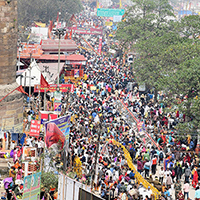Maha Kumbh 2025: Fascinating Facts and Numbers
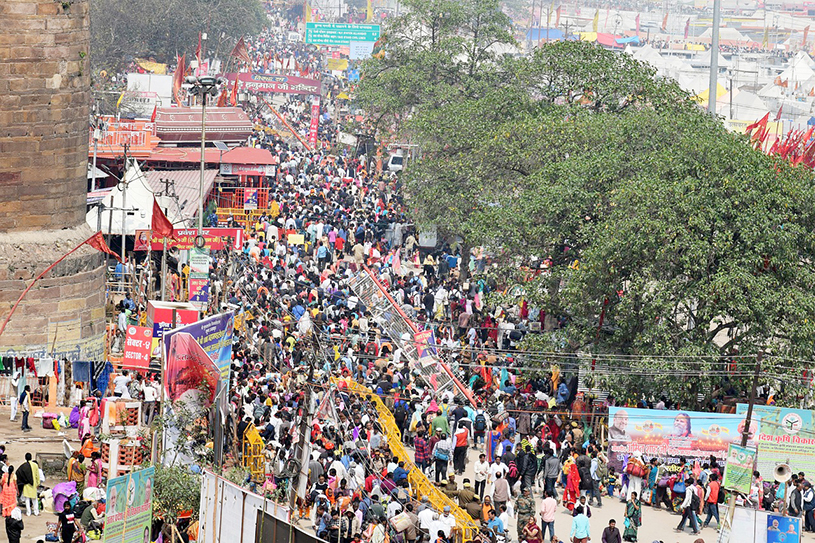
The Maha Kumbh Mela commenced on the auspicious day of Paush Purnima, which fell on January 13, 2025, and will continue until February 26, 2025. This year’s Mahakumbh Mela is particularly significant as the rare planetary alignment occurs only once every 144 years. The 2025 Maha Kumbh in Prayagraj is anticipated to be a grand spiritual event, drawing an estimated 450 million devotees from across the globe. Deeply rooted in Sanatan Dharma, this sacred congregation highlights age-old traditions and cultural magnificence. With the integration of modern technology, advanced security protocols, and meticulous planning, it ensures a safe and spiritually uplifting experience for all pilgrims.
Hindu Scripture : Origin of Kumbh Mela
The Maha Kumbh Mela finds its roots in the Rigveda, one of Hinduism’s oldest scriptures. The term ‘kumbh’ symbolizes a pitcher that once contained Amrit, the divine nectar of immortality, which surfaced during the celestial event known as ‘Samudra Manthan’—the churning of the cosmic ocean.
According to ancient Hindu Scripture, during this process, a kumbh filled with Amrit appeared. To safeguard it from the Asuras (demons), Lord Vishnu, assuming the form of Mohini, seized the kumbh and fled. As he traversed through the heavens, drops of the nectar fell upon four locations: Prayagraj, Haridwar, Ujjain, and Nashik. These sacred sites subsequently became the venues for the Kumbh Mela.
Different Types of Kumbh Mela
- Maha Kumbh Mela: The rarest and most auspicious of all Kumbh gatherings, it occurs once every 144 years.
- Purna Kumbh Mela: Held every 12 years, this grand event rotates among the four designated holy sites—Prayagraj, Haridwar, Ujjain, and Nashik.
- Ardh Kumbh Mela: Taking place every six years, this festival is observed in Prayagraj and Haridwar.
- Magh Mela: A comparatively smaller but significant event held annually in Prayagraj during the Hindu month of Magha (January-February).
Significance of the Venue
The Mela is held at the revered Triveni Sangam, the confluence of three rivers—Ganga, Yamuna, and the mythical Saraswati. This sacred location is believed to absolve sins and offer devotees a pathway to spiritual enlightenment (moksha) through ritualistic dips in the holy waters.
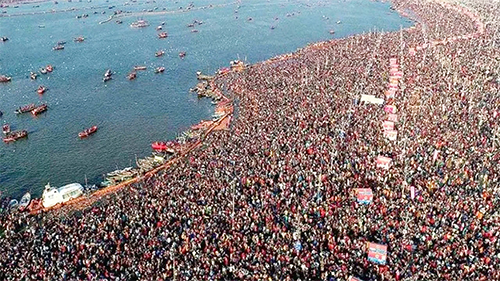 Unprecedented Attendance Records
Unprecedented Attendance Records
As of now, the Maha Kumbh Mela has already welcomed over 300 million visitors, making it the largest religious gathering in the world. By the festival’s conclusion on February 24, 2025, the total attendance is expected to reach approximately 450 million. The event has captivated a global audience, including international travelers and content creators from South Korea, Japan, Spain, Russia, and the United States. Over 2 million Kalpvasis—pilgrims who stay for the entire duration—are participating this year. On Mauni Amavasya, one of the most sacred bathing days on January 29, 2025, more than 100 million people took part in the rituals.
Infrastructure and Logistical Preparations
- Event Area: Covering nearly 15 square miles—equivalent to approximately 7,300 football fields—this is a 25% expansion compared to the 2019 Kumbh Mela.
- Ghat Expansion: The length of bathing ghats has increased from 8 kilometers in 2019 to 12 kilometers in 2025.
- Parking Facilities: Around 100 parking zones have been established, accommodating up to 500,000 vehicles.
- Road Network: Over 450 kilometers of roads have been laid within the Mela region.
To cater to the enormous influx of devotees, authorities have set up a temporary city comprising 150,000 tents, upgraded sanitation facilities, and enhanced transportation systems. Security measures include the deployment of 40,000 police personnel and AI-powered surveillance to ensure public safety.
Financial Investment and Economic Impact
- Budget: The estimated budget for managing the Maha Kumbh Mela stands at approximately $2 billion, reflecting a substantial increase from previous editions.
- Economic Boost: The Maha Kumbh Mela is projected to generate revenue between $30 billion and $35 billion, contributing around 0.8% to India’s GDP, as per the Confederation of All India Traders (CAIT).
This religious congregation provides a tremendous economic stimulus, creating employment opportunities across various sectors such as tourism, hospitality, retail, transport, and food services.
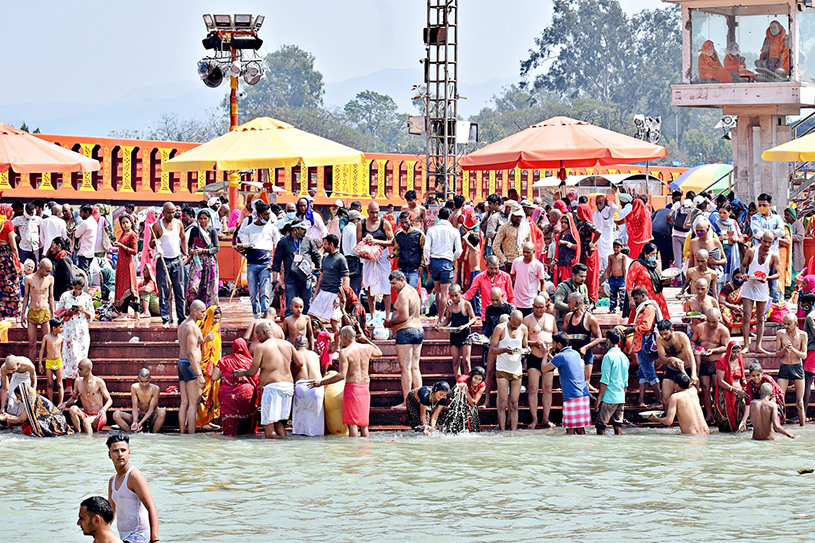
Sanitation and Security Measures
- Sanitation Facilities: Around 150,000 toilets have been installed, while the number of public accommodation beds has increased from 20,000 to 25,000.
- Security Deployment: Over 45,000 police personnel, supported by 55 police stations, will be present to maintain law and order throughout the event.
- Surveillance System: More than 3,000 cameras are in place for real-time monitoring.
- Emergency Readiness: Prayagraj Police have established 57 police stations, 13 temporary outposts, and 23 security checkpoints, deploying over 10,000 personnel, including units from PAC, NDRF, and CAPF.
- Water Safety: More than 700 patrol boats, manned by PAC, NDRF, and SDRF, ensure round-the-clock security.
Advanced Fire Safety Measures
To enhance safety, the Uttar Pradesh Fire and Emergency Services Department has implemented cutting-edge fire prevention mechanisms.
- State-of-the-Art Equipment: The introduction of four articulating water towers (AWTs) featuring video and thermal imaging technology ensures efficient fire control. These units can operate at heights of up to 35 meters and extend 30 meters horizontally.
- Financial Allocation: A $15 million budget has been designated for fire safety, facilitating the deployment of 351 firefighting vehicles, over 50 fire stations, 20 fire posts, and a workforce of more than 2,000 trained personnel.
Free Community Kitchens
Multiple community kitchens have been established, each capable of serving up to 50,000 people simultaneously, ensuring that no pilgrim goes hungry.
Grand Cultural Showcase
Upon arrival at Kalagram, visitors are greeted by a stunning 35-foot-wide, 54-foot-high entrance. This architectural marvel narrates the stories of the 12 Jyotirlingas and Lord Shiva’s act of consuming the Halahal poison, reflecting India’s sacred heritage.
Inside Kalagram, seven Sanskriti Aangans celebrate India’s rich cultural diversity. Modeled after renowned temples such as the Dakshineswar Kali Temple and Pushkar’s Brahma Mandir, these zones highlight traditional art forms, including Bengal’s Pattachitra, Tamil Nadu’s Tanjore paintings, and Madhya Pradesh’s tribal crafts. Visitors can observe 230 artisans reviving ancient artistic traditions and purchase handcrafted souvenirs.
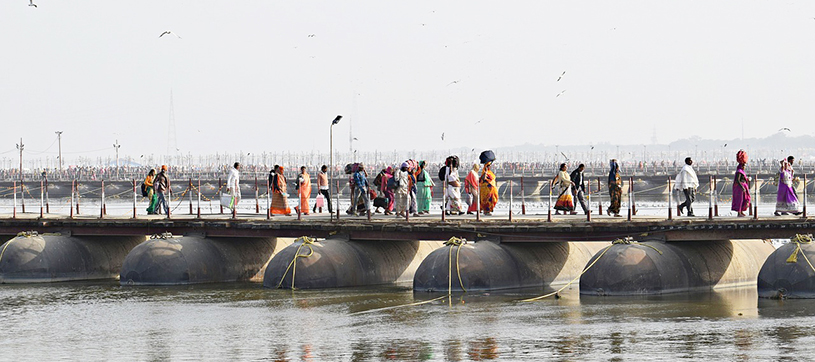
International Recognition and Participation
- UNESCO Heritage Status: In 2017, the Kumbh Mela was inscribed on UNESCO’s Representative List of Intangible Cultural Heritage of Humanity.
- Guinness World Records: Organizers aim to set multiple world records during this Maha Kumbh, including:
- The largest synchronized cleaning drive with 15,000 participants.
- The biggest e-vehicle parade featuring 1,000 electric rickshaws and vehicles.
- The highest number of handprint paintings created in eight hours by 10,000 people.
- The largest river-cleaning initiative with 300 dedicated volunteers.
With its deep spiritual essence, unparalleled scale, and extensive planning, the Maha Kumbh Mela 2025 is set to leave an indelible mark on history, reaffirming its position as the world’s most extraordinary religious gathering.



